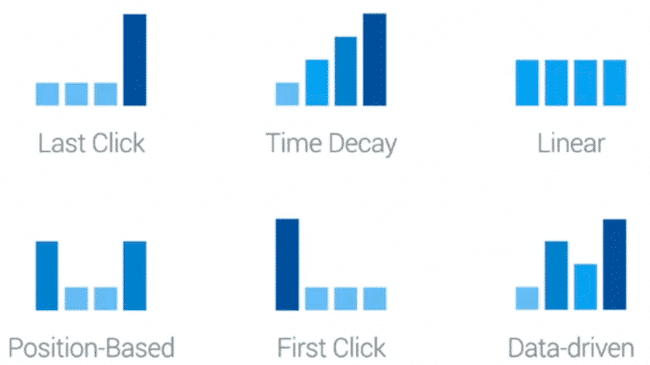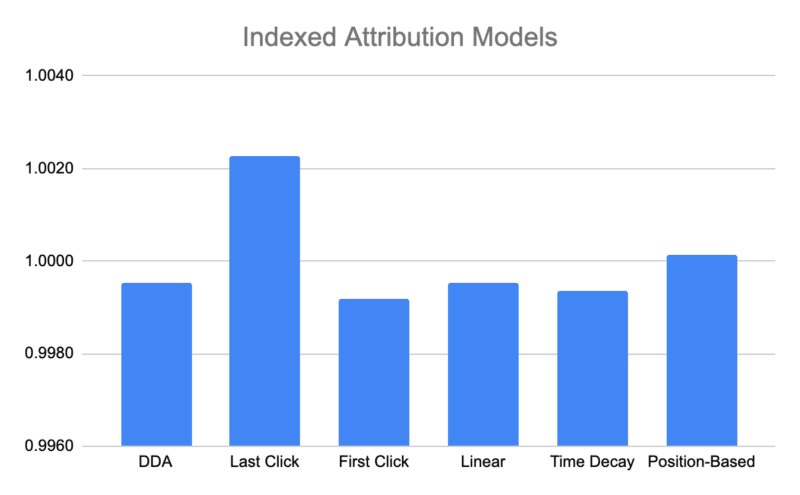Attribution has been the holy grail for advertisers since the beginning of time, especially for media platforms that typically sit further away from the conversion and play a role in branding (i.e., billboards, banner ads and videos).
In September 2021, Google Ads announced its plans to move away from last-click attribution to a data-driven attribution (DDA) model. This change is intended to better allocate credit that search keywords play in a consumer’s purchase decision.
Last month, Google started letting advertisers know it will automatically switch conversion tracking to the data-driven attribution model. Using machine learning, Google believes that data-driven attribution provides the greatest opportunity to value each unique interaction properly.
Here’s what this change in default attribution model means for advertisers and businesses.
The attribution problem
Media platforms have long maintained their contributions in influencing consumers about the brands and products they purchase.
How will the recent attribution shift affect these platforms?
Think about Hulu’s path and the ad products Disney+ and Netflix will sell to advertisers wanting to tie conversions to their media placements.
Think about Pinterest and Snap’s challenges when cutting ad budgets.
What is the first to go? Conversion drivers at the end of the funnel, like search, or awareness-based tactics, like sponsored stories?
This discussion is what makes attribution such a timeless discussion.
Google has the same problem as all these companies but within their own properties.
While Google has shown its ability to grow its search business consistently in almost any economic condition, its real growth opportunity comes in non-search tactics (YouTube, Gmail and Google Display Network).
Inventory is essentially limitless in these areas, unlike search. This is why this change is so important for Google and advertisers.
Common attribution models
Let’s start by breaking down attribution and the different models that indicate how “credit” for conversion is applied. The six common attribution models are:
- Last click: This is the historical default that gives all credit to the final click prior to the conversion.
- Time decay: Gives credit based on the time between interactions.
- Linear: Gives equal credit across each step of the conversion path.
- Position-based: Gives credit to specific steps in the conversion path (typically first and last).
- First click: All credit to the first interaction (typically used to credit awareness tactics)
- Data-driven: Uses historical data to determine the attribution credit. The model will shift depending on the unique path.

What does shifting to data-driven attribution mean for my business?
Partial conversions
Moving to a DDA model will create conversions for keywords that are <1.
For example, if two keywords are involved in conversion the DDA model may allocate the credit for that conversion as .25 and .75 or .5 and .5. as opposed to giving full credit to the client keyword as a whole number.
Google only
Many advertisers’ digital marketing efforts go beyond just Google ad buying platforms. However, DDA within Google Ads only considers Google properties in attribution modeling.
Let’s say a customer clicks an email, then searches for your brand, then watches a YouTube video before clicking through on Facebook to your website to buy.
In this scenario, Google will only allocate credit to Google proprieties. This could potentially give more credit to a conversion or result in double-counting across analytics platforms or conversion tags you might be using.
What does the data show?
I pulled data across a vast majority of our accounts and looked at the differences between the various models.
I noticed slight differences when indexed against the total number of conversions. So slight that I had to alter the chart’s y-axis to the thousandth place.
The most significant difference was between last click and first click attribution (which makes sense since it’s the biggest difference in strategic approach).
The second closest was last click to data-driven attribution. Even so, the swings were less than 0.3%.
Now, these swings may be larger for advertisers with bigger non-search spend amounts or heavy users of Performance Max campaigns.
However, even the accounts with these features didn’t see that big of a difference to change how we managed them materially.

What action should be taken?
This is a very personal choice for the brand. We have seen most of our customers move to DDA, given the smaller change each model has on the total number of prior reported conversions.
Also, the total number of conversions reported out of Google Ads before any shift does not change. Thus, it is just within your account that conversions change. Comparing another tactic like Facebook pre/post won’t be impacted.
Ultimately, the amount of data that Google has on various conversion paths goes beyond any individual advertiser. It also can help provide insights into where cookies or other data is opaque for advertisers (see modeled conversions).
Also, to inform this decision, Google has created the ability to compare various model types. Go to Google Ads and navigate to Tools and Settings > Attribution > Model Comparison.
This tool will allow advertisers to see the variances between the models. Using these comparisons, you can help communicate and educate your internal team about the potential impact.

Overall, data-driven attribution, while not a silver bullet solution completely, provides better insight into various ad types and keywords and how they impact the customer journey.
This will allow your brand to allocate budget and resources better – ultimately optimizing your business to maximize results.
The post Data-driven attribution: How to think about Google’s default attribution model appeared first on Search Engine Land.
from Search Engine Land https://ift.tt/XQmOMnP
via
No comments:
Post a Comment